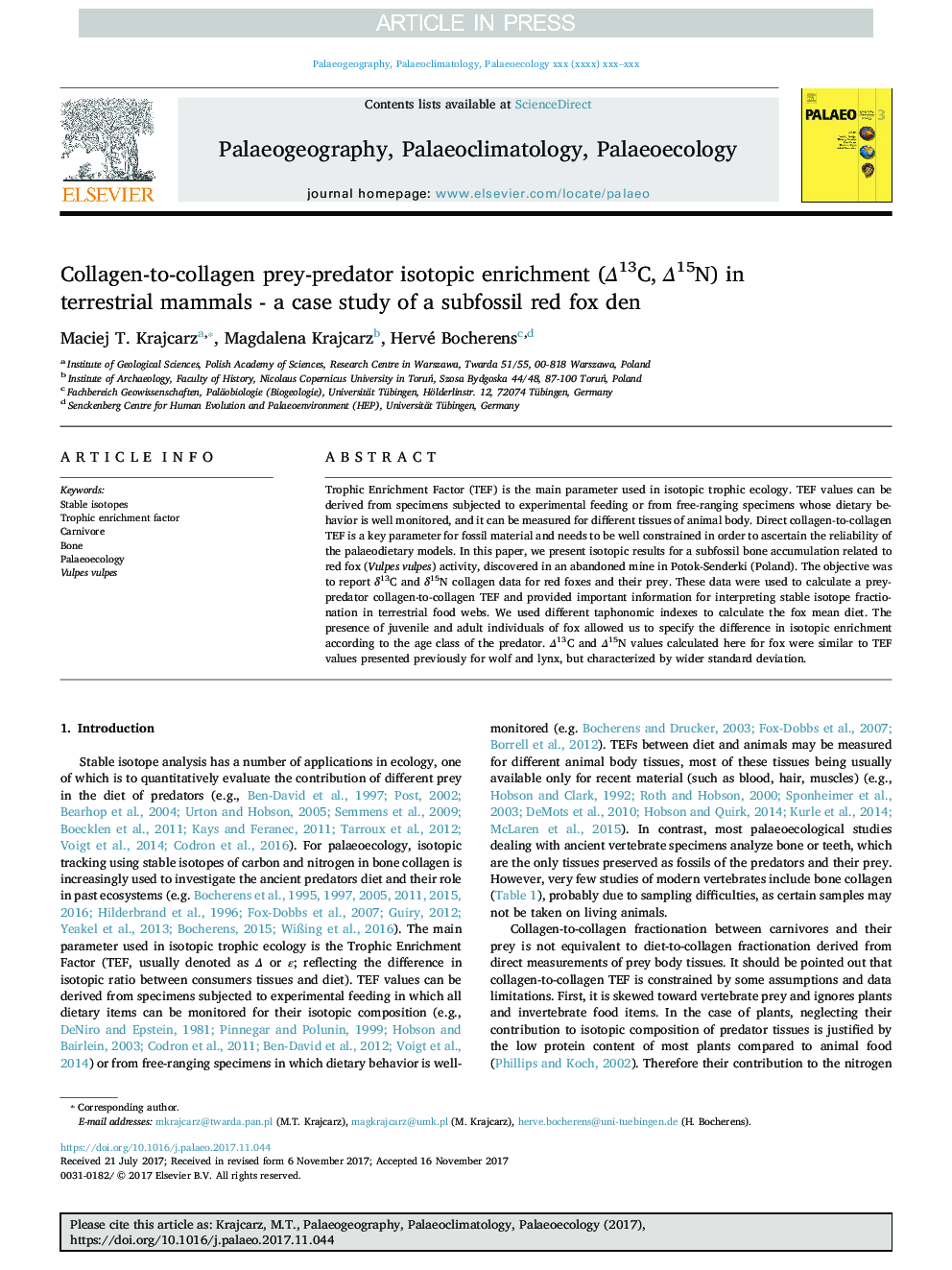| Article ID | Journal | Published Year | Pages | File Type |
|---|---|---|---|---|
| 8868479 | Palaeogeography, Palaeoclimatology, Palaeoecology | 2018 | 8 Pages |
Abstract
Trophic Enrichment Factor (TEF) is the main parameter used in isotopic trophic ecology. TEF values can be derived from specimens subjected to experimental feeding or from free-ranging specimens whose dietary behavior is well monitored, and it can be measured for different tissues of animal body. Direct collagen-to-collagen TEF is a key parameter for fossil material and needs to be well constrained in order to ascertain the reliability of the palaeodietary models. In this paper, we present isotopic results for a subfossil bone accumulation related to red fox (Vulpes vulpes) activity, discovered in an abandoned mine in Potok-Senderki (Poland). The objective was to report δ13C and δ15N collagen data for red foxes and their prey. These data were used to calculate a prey-predator collagen-to-collagen TEF and provided important information for interpreting stable isotope fractionation in terrestrial food webs. We used different taphonomic indexes to calculate the fox mean diet. The presence of juvenile and adult individuals of fox allowed us to specify the difference in isotopic enrichment according to the age class of the predator. Î13C and Î15N values calculated here for fox were similar to TEF values presented previously for wolf and lynx, but characterized by wider standard deviation.
Related Topics
Physical Sciences and Engineering
Earth and Planetary Sciences
Earth-Surface Processes
Authors
Maciej T. Krajcarz, Magdalena Krajcarz, Hervé Bocherens,
